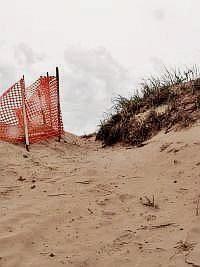|
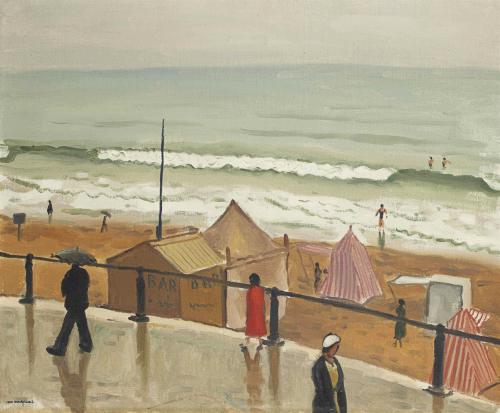 Les Sables-d'Olonne
Albert Marquet
d. June 14, 1947
_______________________
Sky is always the hardest part
Sarah Howe
blackbox manifold
(....)
2
The sun stutters up like a porny .gif
which for you pans the tracking shot of noon.
A fathomed ringtone gargles. Our breathy
pixels mingle, split, miss each other down
the wire. Does material physics call
for a personable God? You have spent
the morning caught in a shoal of tourists
muscling against the Hermitage’s stream,
instincts thick as curdled spawn. We invent
Him in our webcams’ image: electrons
made flesh, that panting beat, window onto
haloed elsewhere. We play at a game called
‘guessing thoughts’. My staticky words ping back
like ozoned heat, solipsistic plainsong.
...(more)
Sarah Howe_______________________
Speed and gravity
Sandra Bullock and a resurrection of the institution
Anders Paulin
eurozine
1. We all know the dream. In a very generic vision of freedom, you're out running. When you jump over a fence or some other obstacle, instead of landing you suddenly keep levitating, up, up and away, until you find yourself freely floating in the air. The first sensation can be a sensation similar to fear, a sudden and tingling panic of a loss of control, which slowly gives way to a triumphant feeling of sovereignty and invincibility. I don't have this dream very often anymore.
2. This text has been written from various positions of doubt, or maybe rather a number of constructive dilemmas.
3. Contemporary economy is ideologically colour-blind; it is simply totally indifferent to resistance. Its main propellant is difference. The difference between the yellow Nike of the last month and the blue Asics of the next week; the tiny glitches separating one category of identity from the other. Because in the logic of contemporary economics, every new category of identity means a new target group. Capitalism doesn't care one bit about the objective or the ideological agenda behind my projects; as long as they produce difference, they fulfil their task as the fuel making the wheels turn faster.
(....)
15. We are creating an infinitely increasing number of platforms to produce difference. Temporary residencies and workshops, platforms and autonomous art collectives, they all produce new and differentiated toolboxes and strategies, supporting differentiated subjectivities and agendas. This apparatus is the inevitable logic of our contemporary modes of production – festivals, projects, temporary collaborations – focusing on an accelerated production and expression of identity and subjectivity, rather than the implementation and negotiation of the produced notions and tools in the public sphere.
Where do these different identities meet to negotiate their differences? Where is the space where these new and differentiated subjectivities have to confront their different positions and agendas with each other? And where do we deal with the strategies, toolboxes, and agendas that we produced last week?
...(more)
_______________________

Louisville, Kentucky, Great Ohio River Flood
1937
Margaret Bourke-White
b. June 14, 1904
_______________________
Milan Kundera's 'Festival of Insignificance' on being and smallness
David L. Ulin
(....)
"Time moves on," one of Kundera's characters tells us. "Because of time, first we're alive — which is to say: indicted and convicted. Then we die, and for a few more years we live on in the people who knew us, but very soon there's another change; the dead become the old dead, no one remembers them any longer and they vanish into the void; only a few of them, very, very rare ones, leave their names behind in people's memories, but, lacking any authentic witnesses now, any actual recollection, they become marionettes."
...(more)
_______________________

The Triumph of Doubt
1946
Victor Brauner
b. June 15, 1903
_______________________
Accelerationism Questioned from the Point of View of the Body
Franco Berardi Bifo
(....)
Acceleration is the essential feature of capitalist growth: productivity increase implies an intensification in the rhythm of production and exploitation. The accelerationist hypothesis, nevertheless, points out the contradictory implications of the process of intensification, emphasizing in particular the instability that acceleration brings into the capitalist system. Contra this hypothesis, however, my answer to the question of whether acceleration marks a final collapse of power is quite simply: no. Because the power of capital is not based on stability. Naomi Klein has explained capitalism’s ability to profit from catastrophe. Furthermore, capitalist power, in the age of complexity, is not based on slow, rational, conscious decisions, but on embedded automatisms which do not move at the speed of the human brain. Rather, they move at the speed of the catastrophic process itself.
But the accelerationist hypothesis can be read from a different—more interesting—angle, as a particular version of the radical immanence in the philosophical dimension of contemporary Spinozian communist thought. (....)
The accelerationist stance, in my opinion, is an extreme manifestation of the immanentist conception. Paradoxically, it also seems to be a particular interpretation of the Baudrillardian assertion that “the only strategy now is a catastrophic strategy.” The train of hypercapitalism cannot be stopped, it is going faster and faster, and we can no longer run at the same pace. The only strategy, therefore, is based on the expectation that the train is going to crash at some point, and the capitalist trajectory is going to lead to the subversion of its own inner dynamics. This is an interesting proposition to consider, but it is ultimately untrue, because the process of autonomous subjectivation is jeopardized by chaotic acceleration, and social subjectivity is captured and subjugated by capitalist governance, which is a system of automatic mechanisms running at blinding speed.
...(more)
e-flux 46June 2013
_______________________
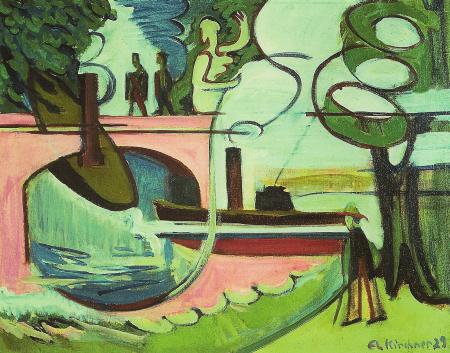
Banks of the Canal
1929
Ernst Ludwig Kirchner
d. June 15, 1938
_______________________
from Ghost of Intention
Judah Rubin
recluse
I am the stone that kills me
–Kamau Braithwaite
Say there is money but it rusted
–Lorine Niedecker
II.
Susan Howe says
it is from
enclosure that American history
emerges —
then, too
from silence of the border
itself — mutation of the land and
scars upon
it. The bondsman — helial
within the
seismic mediate — the dark
shivered to know the text as hanging
matter, loose and between
the effluorescent missive
The captivity narrative
extends in heresy to
our present
the unfolding of
a deferrent chimera.
Let the names pronounced
by the uncovered datum
be contingent on the idol’s
absented mould,
thirst will emerge
as a means of
deposition. Thirst is
as heresy – by means
banishment and
enclosure – means by which we are built –
by which the historical self
individuates its paraoblic other, from
whence deviance – as one walks the
negotiated first in termed
the pinhole of
mind reveals its
vomitoria.
...(more)
_______________________

Margaret Bourke-White

The Self Seers
(Death and Man)
1911
Egon Schiele
b. June 12, 1890
_______________________
Alembic
Sarah Hannah
Memory’s a still, a ruthless contraption.
You cannot work it backwards.
A trace, anemic limb within a sprawling wood,
A random pool of silt through a funnel.
It’s not alchemy, it’s not miracle.
It’s criticism. Winnowing.
From three hundred thousand spawn, five minnows.
That one brilliant salmon who flew out of the stream.
You lived somewhere for many days.
What can you retrieve?
High windows, white, with mullions,
The waving tops of aspen trees.
You lived somewhere for very long.
But the avenues by which you could recall it
Have been closed for new construction.
At some point your mind chose a few for you,
A lucky few among the millions.
It was a process, then process turned to dogma,
As cars in thick snow
Will do well to drive in tracks of other cars.
The same few pictures strand, and then again;
You rescue four, then three, then two.
High windows, the waving tops of aspen trees.
There’s no way to reverse the still,
No way to widen the path.
The silt in the cup won’t revert to its primary
Ingredients. You can’t save even half.
Windows, the very tops of trees.
...(more)
_______________________

Crescent of Houses II
(Island Town)
Egon Schiele
_______________________
Without Anesthesia
Aleš Debeljak
Translation by Brian Henry
blackbird
(....)
3
It is time. Say what was once already said.
So that there will be no misunderstanding. Begin
where you want. More than now you won’t tolerate.
In a bird’s takeoff from the water’s surface, there’s
already a fall. You too will lose nothing. You keep
as much as you give. Fleeing in a foreign tongue
is longing for silence. Whose bodies do not fray,
because you know them from the inside.
Because only people die, not their silence.
But flocks of starlings returning home are loud.
You’ll have to raise your voice. Speak now! Say
how you keep quiet and become the breath of all people.
4
Enough words. Better to doze off. Above me wild geese,
dry cough and embers in me. —A gust of wind spins
the weathervane. In the end I stayed. Really it is already
time that I become the acoustics of silence, a secret
ongoing dialogue. I won’t be anybody’s cry anymore,
crystallized in amber. The stars are cold, people
turn on lights in flats. Night’s ultrasound goes across
the world. What can I still expect, what can I still give?
I remembered the rhythm of physical pain with which
the world begins every day. I know the illusion of images
and old texts, I would like to be alone again.
Like the baby crying when separated from his mother.
...(more)
_______________________

The Hermits
Egon Schiele
_______________________
A proposal to classify happiness as a psychiatric disorder
R P Bentall
journal of medical ethics
Abstract
It is proposed that happiness be classified as a psychiatric disorder and be included in future editions of the major diagnostic manuals under the new name: major affective disorder, pleasant type. In a review of the relevant literature it is shown that happiness is statistically abnormal, consists of a discrete cluster of symptoms, is associated with a range of cognitive abnormalities, and probably reflects the abnormal functioning of the central nervous system. One possible objection to this proposal remains--that happiness is not negatively valued. However, this objection is dismissed as scientifically irrelevant.
_______________________
The Utopia of Art
Composition as construction of an alternate reality
Zachary Sunderman
Public Seminar Commons
In her recent contribution to Public Seminar, my colleague Dominique Suberville argued that art, in its current form, is stylized exhibition of the social condition: what some of us, following Jeffrey Goldfarb and Iddo Tavory, have been designating as the examination of irreducible social tensions and socially mediated personal dilemmas. In doing so, Suberville has discovered a new “narrative” by which art can continue to be intelligible as art, contra the funeral oration delivered famously by Arthur Danto in 1984.
One of the significances of Suberville’s observation is that she points to a way in which contemporary art is functioning as a sort of exhibit on the social world. In a reply to a related piece from the Italian critic Renato Barilli, philosopher Chiara Bottici asked if there is any longer such thing as a boundary between society and art. I think that Suberville’s article answers “yes,” but the distinction is not so radical as it once was. Art no longer depicts the world, nor expresses it, but intervenes in it: it examines the world and uses artistic forms to exhibit what it finds, throwing the world back upon itself as an object of consciousness. It takes what we take for granted and turns it into phenomena that can be confronted.
Art can do this — expose the unexamined — exactly because it is not part of the normal flow of social experience.
...(more)
_______________________
Art is the Social Condition: A Proposal for the Marriage of Art and Sociology
Dominique Suberville
Public Seminar Commons
As part of my role in the course “The Social Condition,” I’m looking to vouch for what I consider to be a narrative in the art world that may be able to capture the essence of what art has become. While art has married philosophy in the past, I assert that art should now officially marry sociology. Not as a new tendency but as an embrace of something that has already occurred in the recent past.
We’ve already been referring to this as postmodernism or contemporary art. But what I find is that art has become a narrative for the social condition itself.
_______________________

Egon Schiele
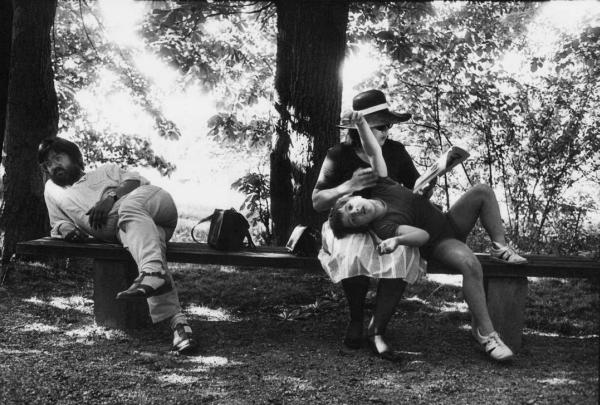
Living Together, 1974-1984, GDR
Ute Mahler
_______________________
Jörg M. Colberg on Ute Mahler and Zusammenleben
Conscientious Photography Magazine
What do we do with – or to – each other when we live together with someone? Living with other people entails a flurry of things that we are all familiar with, even though large parts of our experiences might not have risen to the level of consciousness. What we feel and see: do those we live together with feel and see the same? How do we navigate this seemingly endless territory? Over the course of a decade and a half, Ute Mahler photographed people in her immediate surroundings to find out.
What can photographs tell us about living together with other people? In a brief afterword to Zusammenleben (German for “living together”), a book that collects many of the pictures, Mahler writes “I was spurred on by the question of how familiar people were with each other, as well as how alien they could become. Today, I think I probably wanted to take pictures where you could see love.”
...(more)
_______________________
Dizzy birks Jack's head at the bar
Duncan McNaughton
according the theory of light of Exodus of Cyzicus, if
along the corniche at Smyrna
among the gently rocking vessels moored nearby
is one in which a woman sleeps
in a torment of neglect
the afternoon away
against the evening's festivities, then
amidst the promenade of strolling Levantines
must be collapsed on a bench a man
collapsed in mourning
as if twisted around an invisible pole
don't disturb him
Exodus constructed a huge ship at Gades
which he filled with party girls and physicians
for the westward voyage in the shape of a horse
when he is ready he will take coffee like a sacrament
tobacco cigaret in any cosmopolitan area there are masters
locally permanent at odds with themselves
on the subject of this world
and the worms boring through its hull
-
-Duncan McNaughton, from Capricci (Blue Millenium Press, 2003)
"The Pants of Time"
Benjamin Hollander on Duncan McNaughton
Who knows or can speak of Duncan McNaughton and his poems: of the Boston-born poet (1942), now living in San Francisco, editor of the two 1970s poetry journals Fathar and Mother; founder and director of the Poetics Program at the New College of California;master teacher in the 1980s with that other Duncan (Robert), among other extraordinary teacher-poets who refused academia or whom academia refused (David Meltzer, Diane di Prima, Michael Palmer); author of a never published dissertation on Shakespeare’s sonnets, along with eighteen books of poetry, which, by and large, have never been reviewed, relics of the generation of slow hand-made small press poetry books mostly out of print.
And so who knows, who notices, that to speak of Duncan McNaughton’s poetry is to go against the current of poets rambling in poetic rhetoric about the role of poetry in today’s social-media world, as if, McNaughton wrote in a March 3, 2006, letter to the poet and critic Dale Smith, it is “a matter of the poem and the poets having to become ‘better’ communicators or to come up with means which generate wider social attention to them.” Such exertions are not for McNaughton. Instead, he critiques discourseas a cultural practice serving systems of power; in this sense he sees the poem as disobedient to that enterprise. Words do or don’t do the work of the poem—they are, as Jack Spicer said in his second letter to Lorca, “what we hold on with, nothing else.”The work of the poem, McNaughton writes, “is not in any sense a job for rhetoric, in order to gain efficacy of persuasion, to gain social affect i.e. power. . . . Language and discourse, specifically generated by the advent of writing itself, are in the agency of power. . . . It is like Alice Notley said, words aren’t language—they never were.”
McNaughton’s sense of what words are about, what the poet can do with them, is captured in Charles Olson’s description of the poet as an “archaeologist of morning.” ......(more)
via Pierre Joris
_______________________
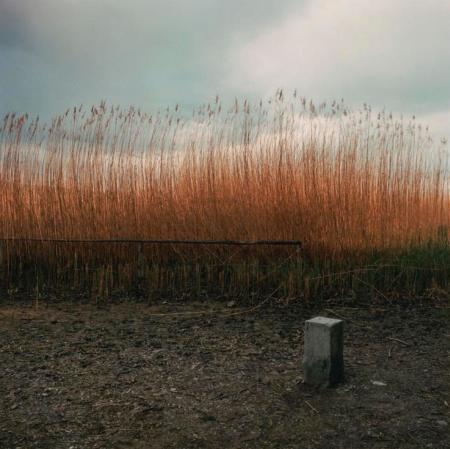
On the traces of Friedrich Schiller
Ute Mahler
_______________________
A Note on the Long Tomorrow
Sarah Resnick
On the allure of resignation, no-futurism, and eternal drift; techno-optimism, trickle-down utopia, and "capitalism to the nth degree."
The Long TomorrowTriple Canopy 21
Who bears the responsibility, and who possesses the imaginative capacity, to conceive of an ideal world? Though utopians, futurists, and visionaries have never been united under one standard, radicals and progressives used to be uniquely equipped and motivated to do this work, and today mostly defend the scraps of bygone idealism and attend to the detritus of twentieth-century achievements. But constructing an image of an alternative world, another way of living, has an essential social function, and reflects—or even determines—the agency of the constructors. This task, like forming an image of the past, is never neutral or impartial. And now those who make investments in the future—and whose investments pay off—tend to be libertarian technologists, financial engineers, and affiliates of plutocrat-funded think tanks. This issue is an exhortation to bet on the future again—to formulate propositions, predictions, and projections that make demands on the present.
_______________________
Paul Virilio: The Propaganda of a Growing Disaster
S.C. Hickman
dark ecologies
(....)
We are living in that ’empty time’ – a time between, in a pocket emptied of time in which the speed of infinity has been dispersed throughout the socious like the dark stain of some forgotten memory of time. We have entered that hyperrealist stage of the ‘accident’ – seeking kairos – the “right moment” we wander in a geophysical density of time that restricts us to layers of space, cubicles of time, distortions of history that lay side by side in a Chinese puzzle that continuously shifts its pieces in atemporeity (Bachelard). As he admits the Earth itself will be both victim and judge of this Progressive inanity: put an end to our ‘progressive’ ambitions, the finiteness of the ‘real space’ of the terrestrial globe polishing off the ample order of magnitude of the ‘real time’ of cybernetic immediacy. (p. 74) In other words – the end game of actuality is upon us, no good hiding in the speed lanes of our illusionary hyperworlds in the net. Now is the time of the Real.
...(more)
_______________________
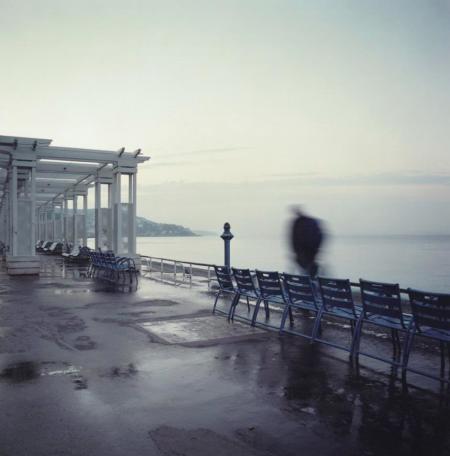
On the traces of Friedrich Nietzsche
Ute Mahler
_______________________
... if anyone has found a genealogy, and an affect, for early twenty-first century life as many of us live it — it is Bifo.
Franco ‘Bifo’ BerardiMcKenzie Wark Public Seminar Commons
(....)
For Berardi, it is partly this different quality of the labor, and partly the decay of communal spaces outside of it, that leads workers to invest emotional energy and desire in their work itself: “labor has regained a certain position in the imagination” (80) Identity based on a job role can replace pleasures sought outside of it ...
(....)
Berardi is far from rapturous about this new kind of embrace of work. It may bespeak a failure of any other understanding of what ‘wealth’ could be outside of accumulation. There is a “reduction of the erotic sphere” (82) and “metropolitan life become so sad that we might as well sell it for money.” (83) The attempt to find freedom, humanity and happiness can only be through that ambiguous term, ‘enterprise.’ I wonder what leverage one might get here by juxtaposing the commonplace free enterprise against a notion of true enterprise. What might it mean to have a real project of making the good life?
The historical distinction Berardi draws here between Fordist and post-Fordist work is illuminating but might be a bit too sharp. Not many metropolitan workers enjoy such conditions, in either sense. It might not be the case that all workers found Fordist labor alienating. Lyotard notoriously thought otherwise, and there is a magnificent scene in Elio Petri’s The Working Class Go To Heaven (1971) that shows the hard, visceral engagement of worker and machine.
Still, it seems an at least partially accurate delineation of the metropolitan present: where accelerated capital blocks formation of community; where the cellphone makes possible endless recombinations of fragments of labor, making all of time potentially productive; and where it takes a whole pill cabinet of anti-depressants, stimulants, anti-anxiety medications and even cocaine just to keep working through the cycles of panic and depression.
...(more)
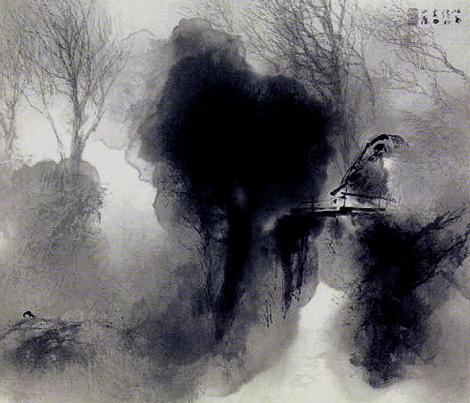
Crow in the Evening
1933
Takeuchi Seiho
(1864-1942)
_______________________
Translations From Urdu: Three Poems By Majeed Amjad
by Ali Minai
3quarksdaily
Voice, Death of Voice (1960)
No ornate ceiling, nor canopy of silk;
no shawl of flowers; no shadow of vine;
just a mound of earth;
just a slope covered with rocky shards;
just a dark space with blind moths;
a dome of death!
No graven headstone, no marking brick –
Here lies buried the eloquent poet
whom the world implored a thousand times
to speak out,
but he, imprisoned by his fancy's walls,
far from Time's path,
oblivious to the lightning upon the reeds,
drowned himself in the breast of a silent flute:
a voice become the death of voice!
...(more)
_______________________
Historical Encounters
A journal of historical consciousness, historical cultures, and history education
Vol. 1 No 1
_______________________
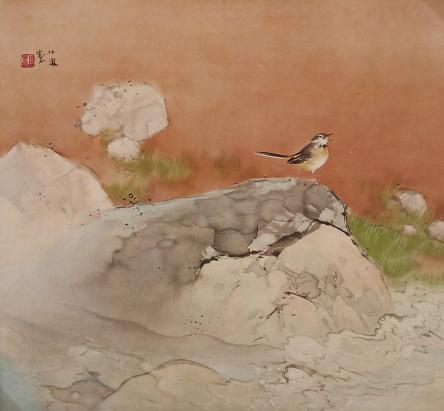
Wind and Clear Water
Takeuchi Seiho
1937
_______________________
The Poet On His Island
A Final Conversation With Tomas Tranströmer
John Freeman
(....)
Like a true descendent of sea captains, Tranströmer does not take arrivals by water lightly, even if the stroke that paralyzed him 25 years ago makes this gesture difficult.
I arrive to find him waiting in a wheelchair at the end of a long thin, twin-track gravel path, a blanket round his shoulders, Monica standing behind him.
A radio that dates to the mid 1950s rests in his lap, aerating the forest with Rachmaninoff’s symphony no. 2 in E major.
As Monica wheels her husband gently toward the house, up a ramp and into the front room, all the symbols of Tranströmer’s poetry whistle around us. The ground around the house is pleated by roots and moss. Wind murmurs in the trees. The air smells of sea salt and resin. No doubt a hawk or buzzard hovers above, peering down on us, observing the scene.
Right away Tranströmer begins pointing things out, in silent gestures: here, this is what I was trying to say.
Over the next two hours, it’s clear this island has given him the notes to create such a magical, and enduringly beautiful score of poetry. And so questions about poetry, about its meaning, always wend their way back to the island, to Tranströmer’s grandfather, the poet’s hand often raising up to point out the objects and paintings around the room, as if they are the poems themselves, not the subject or inspiration of them.
...(more)
_______________________
Into
Miia Toivio
Otoliths
To you I return.
Are you my only vowel?
Perhaps not, no, it’s not
you, but into you that I
plunge, I pry, I probe, if only
you’ll allow this flight, this flow, this flair
for your bones
which I only dream of and towards
which I float.
(....)
This is a description; it is hidden in somebody else’s tale. Read the hints, they point
elsewhere, further like a method, the dome, doth me. You yearn for this gun to be fired.
You only need to think about something else, that’s all. Sometimes in the structure
there is a little more, sometimes a little less, of him. There is something in his mind
which reminds me of a tower, you wish to climb it and flow down a little bit.
For a long time he has wanted to tell you some things about architecture.
You somewhat get it. It has something to do with vowels.
Vowels do stuff to you; you yearn to have more vowels. Your hints are vowels. He wants
a history, he wants to lick it and make it do some stuff. They are two separate things.
Two separate things want to make some vowels for you. You yearn to have a few more licks.
The hand is in both places. It is not meant to yearn meaning like on rails; you know how desirable it is,
but not regularly. You wish to have this order. All you have to do is think about something
else. He wants to tell you all about vowels. He cannot wait until architecture has first caressed him.
The tower is in both tales. You desire some history; history is going to make you
do things. He wants to write more vowels. You desire something else; and then
some more vowels. They are two separate things. Two separate things are in both
places. The hand has held the vowel, which has caressed architecture. The history of licks
is written in a vowel. History wants more of it. It forces you, that’s all, to wanting things.
Your thing is in both places. He wants to lick it and force it into doing history, but not
regularly. You wish to have this order. The tower is in both tales. He wants history
to caress you. History just can’t get enough of vowels.
...(more)
_______________________
Miia Toivio
Leevi Lehto
Miia Toivio, ”Miia With Two Eyes” (title of her blog), may be the one actor at the scene of the Finnish poetry of the 2000's who is most connected with everything else in it – in this (complicated) roll of thread, not unlike the one she writes about in her Loistaen olet (Shining, thou art, Teos 2007): ”A red thread is rolled in my stomach, / and when it wakes up, everything will change, / the music will stop, and the chairs alike.”
Born 1974, a poetry activist, an organizator, editor-in-chief of the poetry magazine, Tuli&Savu (Fire&Smoke), at the time of its most crucial importance, 2003 to 2006, poet, a charming and compelling performer, a debatist, a critic – re-reading today her 2007 poems, I cannot help thinking of her, anachronistically, and in a friendly amusement, as the young Pound of the new Finnish poetry.
...(more)
_______________________
On The Origins, State, And Future Perspectives Of Finno-Saxon
the conversant
A roundtable with Charles Bernstein, Frederik Hertzberg, Teemu Ikonen, Karri Kokko, Hasso Krull, Leevi Lehto, Olli Sinivaara, and Miia Toivio at the Kiasma Art Museum, Helsinki, August 24, 2004.
_______________________

Yanaka Pagoda in Moonlight
Takeuchi Seiho
c. 1940
_______________________
Privacy Without Screens & the Internet of Other People's Things
Meg Leta (Ambrose) Jones
Abstract:
Screens have formed the foundation of our experience with connected content, and information exchange agreements adhere to this comfortable arrangement. While the addition of screens, tabs, and apps complicated information collection and privacy, a lack of screens promises to further complicate the arrangement. Notice and choice, wherein an information collector notified information subjects of what would be gathered and how it would processed, is incredibly challenging in a screen world and is even more challenging in a smart world without screens. The focus of the essay is not on individuals operating with a screen, nor on the initial operator of a device in the smart world that may adapt information and use settings or agree to terms of service found in the box the product was delivered in, but on everyone else that may be exposed to numerous smart devices in a smart world. It focuses on information preferences in the internet of other people’s things.
_______________________
Texte Zur Kunst No. 98 - "Media"
Going beyond discussions of post-Net production in the digital realm, this issue invites in the ghost of Friedrich Kittler to address “media” via the nexus of its fraught theoretical legacy – ’90s techno-determinism versus the biopolitical forces of capital in the social field. What if, rather than writing a social history of media, we thought through media to read our social sphere? The fallout is recombined here as a framework for engaging, and perhaps upending, contemporary relations of body, class, and power and the devices and cultural techniques by which they are bound.
_______________________

Takeuchi Seiho
_______________________
Twisted tongues
Miia Toivio
Translated by David Hackston
books from Finland
(....)
To surround silence
to stand with a net in hand catching butterflies
the butterflies pass the net’s gullet
what is it that surrounds silence
why is surrounding important
isn’t someone standing there, silence growing
like a tall birch
up from within the listener, his ribs
give way
from his crown a treetop rises
upwards, nudging the sky:
or so the birches believe, those craning trees.
The wind gets inside them and shakes them,
the wind’s caress cannot be avoided,
the wind so strong you can’t hear your
I’ve forgotten what to write
of those bearers of green
knights of the green shroud
wrapped in green shroud
monarchs of the greening days
lush, soft and deep,
those that surround
...(more)
_______________________

Takeuchi Seiho

Island Sheds, St Ives No. 1
1940
Wilhelmina Barns-Graham
b. June 8, 1912
_______________________
I Was Sleeping Where the Black Oaks Move
Louise Erdrich
b. June 7, 1954
We watched from the house
as the river grew, helpless
and terrible in its unfamiliar body.
Wrestling everything into it,
the water wrapped around trees
until their life-hold was broken.
They went down, one by one,
and the river dragged off their covering.
Nests of the herons, roots washed to bones,
snags of soaked bark on the shoreline:
a whole forest pulled through the teeth
of the spillway. Trees surfacing
singly, where the river poured off
into arteries for fields below the reservation.
When at last it was over, the long removal,
they had all become the same dry wood.
We walked among them, the branches
whitening in the raw sun.
Above us drifted herons,
alone, hoarse-voiced, broken,
settling their beaks among the hollows.
Grandpa said, These are the ghosts of the tree people
moving among us, unable to take their rest.
Sometimes now, we dream our way back to the heron dance.
Their long wings are bending the air
into circles through which they fall.
They rise again in shifting wheels.
How long must we live in the broken figures
their necks make, narrowing the sky.
_______________________

At the Edge of the Wood
Charles Rennie Mackintosh
1913
_______________________
Environmental Remediation
Alenda Chang
electronic book review
(....)
As a scholar of environmental media, what interests me is not just how the EPA’s online tools and documents work to make visible governmental scrupulousness in addressing hazardous waste, but rather how they demonstrate that media are contiguous with, not distinct from, geographic space. Many have noted the notorious flexibility of the terms “medium” and “media,” one which has resulted in an exciting but also confusing amount of latitude in fields as diverse as film and media studies, science and technology studies, and art history. Part of the difficulty is, of course, that a medium can describe equally well the oil paints that an artist uses, the nutrient broths and agar substrates used to grow microorganisms, the storage for digital data, like a hard disk, or perhaps most commonly, a means for communication, usually at a distance, as we speak of the mass media.2 To my surprise, however, little to nothing has yet been said about remediation in both its ecological and techno-aesthetic formulations. In new media theory, remediation has become synonymous with recursive processes of media reformation as well as creative appropriation, remix, and re-use on the part of artists, designers, and tech-savvy consumers. But the escalating need for what’s known as environmental remediation—cleaning up or cordoning off polluted sites, often using technological or biotechnological methods—cautions us that human and nonhuman bodies and ecosystems are equally enmeshed in practices of communication and transformation. A more inclusive approach to remediation might begin with a faintly Derridean recognition that remediation always signals both a problem and its resolution, a paradox also evident in words like “remedy” or “remedial,” all of which come to us from Latin roots denoting efforts to heal or cure. My central proposal, however, is twofold: environmental remediation reminds us that environments are also media, able to transmit, conceal, and come between other entities in significant ways; so too, our usual media are environments, which inevitably frame our understanding of the natural world and thus have the capacity to remediate beyond their representational margins.
...(more)
_______________________
A Vital Materialist goes to The Lego Movie
Christopher Leise reviews Jane Bennett's Vibrant Materiality: A Political Ecology of Things through the lens of the Lego Movie
electronic book review
Thing-power perhaps has the rhetorical advantage of calling to mind a childhood sense of the world as filled with all sorts of animate beings, some human, some not, some organic, some not. It draws attention to an efficacy of objects in excess of the human meanings, designs, or purposes they express or serve. (Bennett 20)
This is an essay to be taken with a child’s, or Gilles Deleuze’s, naïveté. To those who fail to find such thinking sufficiently serious, take heed—you may well find yourself neatly aligned with The Lego Movie’s antagonist, Lord Business (Will Ferrell), who is also the nameless father, who is also “The Man Upstairs,” who wishes you only to follow The Instructions and build a perfectly ordered, endlessly fixed modern city of…toys. To those of you who wish to see The Lego Movie but have not yet, I urge you, please read on. Even though you do not know how the struggle between the yellow-faced construction worker named Emmet (Chris Pratt) and the evil Lord Business plays out, and even though I expose that narrative’s resolution, I hope this will make you only more eager to see the “film” (if such a term remains apposite) and to read Jane Bennett’s remarkable Vibrant Materiality: A Political Ecology of Things. A theorist who yokes Deleuze’s chaotic “anti”-metaphysics to ongoing debates concerning agency and how matter matters in environmental thinking, Bennett might appreciate how, much as Deleuze does, I find illustrative the probably unintentional critical effects of an entertainment-driven movie.
...(more)
_______________________
Documentaries without documents? Ecocinema and the toxic
Karl Schoonover
NECSUSNECSUS
European Journal of Media Studies
Autumn 2013_'Waste'
_______________________
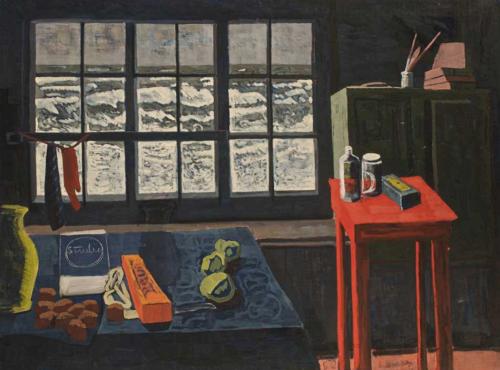
studio interior
Wilhelmina Barns-Graham
c. 1945
_______________________
David Winters Interview
by Andrew Gallix
bomb
(....)
I’ll start with “music.” Yes, for me, cadence is everything. I’ve always been drawn to writing written, as William Gass puts it, “by the mouth, for the ear”—writing in which every phoneme counts; where prosody and acoustical patterning constitute a kind of thinking, a kind of cognition. For Pater, music collapses the opposition between subject matter and form—and so, in a sense, do the writers I write about. I’m not an uncritical disciple of Pater, but I do think the phrase “art for art’s sake” retains some residual value, insofar as it serves, in George Steiner’s words, as “a tactical slogan, a necessary rebellion against philistine didacticism and political control.” For instance, an acquaintance of mine once attacked the art I admire as a “triumph of style over substance.” I’d side with Pater in seeing such triumphs as a desirable “obliteration” of the distinction between “form and matter.” I’d follow him, too, in wanting to view the aesthetic object as extra-moral, or at least anti-ideological; an alternate world in which, as he observes in his essay on Botticelli, “men take no side in great conflicts, and decide no great causes, and make great refusals.” For me, part of the power of art lies in precisely those refusals.
Of course, what’s interesting about the passage you quote is the way in which Pater’s own writing obliterates, at a phenomenological level, the distinction between the artwork and what he calls “the moment”—a collapse that, as you say, returns us to “the experience of life.” I don’t mind admitting that I care very little about ethics or politics when it comes to art, and that criticism, for me—considered as a way of thinking through, or working with, works of art—is largely an attempt to live within and learn from that collapse.
Of course, what’s interesting about the passage you quote is the way in which Pater’s own writing obliterates, at a phenomenological level, the distinction between the artwork and what he calls “the moment”—a collapse that, as you say, returns us to “the experience of life.” I don’t mind admitting that I care very little about ethics or politics when it comes to art, and that criticism, for me—considered as a way of thinking through, or working with, works of art—is largely an attempt to live within and learn from that collapse.
...(more)
_______________________
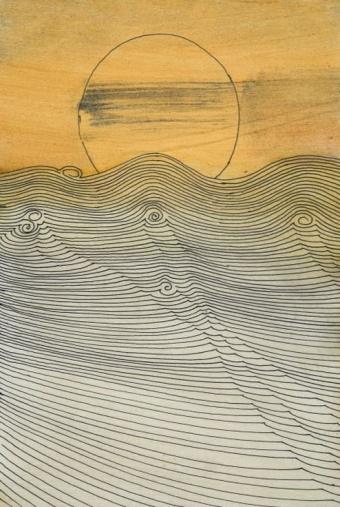
A Discipline of the Mind
Wilhelmina Barns-Graham
_______________________
Nick Land: On Schopenhauer
S.C. Hickman
Kant’s critical philosophy is the most elaborate fit of panic in the history of the Earth!
- Nick Land, The Thirst for Annihilation
Nick Land unlike Badiou or Zizek will tell us that it is to Schopenhauer that we should return, not Kant or Hegel. “With Schopenhauer the approach to the ‘noumenon’ as an energetic unconscious begins to be assembled, and interpreting the noumenon as will generates a discourse that is not speculative, phenomenological, or meditative, but diagnostic.”
This sense of a diagnostic philosophy rather than a speculative, phenomenological, or meditative steers us into that other materialist tradition that has for the most part seamlessly vanished from site in the past few years, while luminaries of the left will follow such dematerialist materialisms under the sign of the Lacanian ‘Gap’ or ‘Lack’ as Alain Badiou (Mathematization of Being) and Slavoj Zizek (Self-Relating Nothingness) uphold. Land admonishes us to know that before such speculative materialists as Quentin Meillassoux with his notion of the contingency of things and his anarchic obliteration of the principle of Sufficient Reason, Schopenhauer had already laid the groundwork. Schopenhauer considers “the principle of sufficient reason or logicality of being to have a merely superficial validity” (Land, p. 9). In other words for Schopenhauer the principle of sufficient reason is not so much an objective truth, as it is a heuristic device – an exploratory mind-tool that serves a particular function in the philosopher’s tool-bag.
...(more)
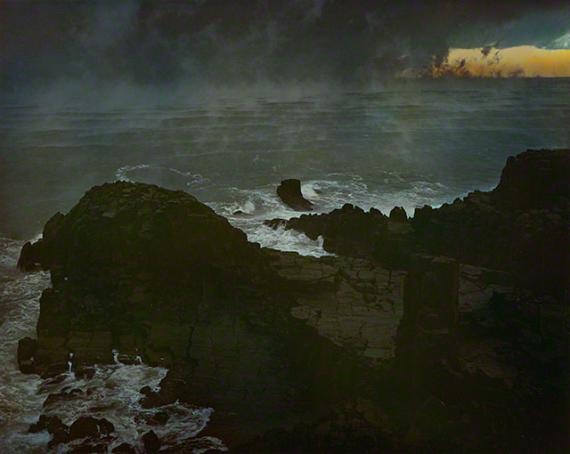
Eroded Sea Cliff at Tojinbo
1960
Hiroshi Hamaya
1915 - 1999
_______________________
Zizek and me
McKenzie Wark
Public Seminar Commons
It is illuminating to have comrade Zizek write about one’s work. I think his comments on Molecular Red highlight two paths among which theory can choose to move at the moment: the high road of philosophy, or the low road of something else, as yet unknown. It is less about the wrong or right path, and more about what kinds of thing the taking of one path over another enables one to do. So let me explain, via the contrast with Zizek’s high road, why I take the low one.
(....)
As Zizek puts it in his characteristic language: “One is tempted to add that, if there is one good thing about capitalism, it is that under it, Mother Earth no longer exists.” Or as I put it in Molecular Red: it is not just that as Nietzsche says “God is dead,” it is also that the Goddess is dead. There is neither Father spirit nor Mother earth. This whole metaphorical cosmology is no more. And in a double sense: these metaphors no longer apply; but neither is there a stable world to which the could apply. And as we shall see, the means by which we know this is not a stable world are extra-philosophical.
...(more)
Ecology against Mother Nature: Slavoj Žižek on Molecular Red
Miri Davidson
Molecular Red: Theory for the Anthropocene
McKenzie Wark verso
The Molecular Red Reader a free pdf verso
_______________________
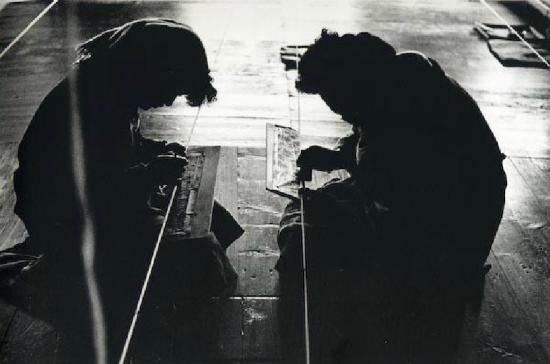
Dying thread for ikaat cloth
Hiroshi Hamaya
_______________________
Bellow: The ‘Defiant, Irascible Mind’
Nathaniel Rich
(....)
As Bellow’s contemporaries age out, the controversies over the representation of real people in his novels, so central to Leader’s biography and its predecessors, will lose their fascination. (I suspect they already have for most of Bellow’s younger readers.) If Bellow continues to be read, it will be for the exuberant prose, the rigorous wrestling with ideas, and the exquisitely vivid evocation of the eras and places that he occupied. In a noisy world, his fiction creates a refuge—a quiet zone.
Bellow’s anxiety, as he himself points out—citing José Ortega y Gasset, William Wordsworth, Paul Valéry, and Heraclitus—is nothing new. Writers have always struggled to negotiate between life’s daily commotion and the quietude necessary for contemplation. Not all writers have come down on the same side of the matter. Kate Chopin wrote at home surrounded by her seven screaming children; Ernest Hemingway and Aharon Appelfeld wrote in busy cafés. And surely taking monkishness to its extreme can be suffocating—one thinks of J.D. Salinger in Cornish, New Hampshire, ascetic to the point of muteness. Bellow himself understood that there needed to be a balance. For all his renunciation of the Great Noise, he was an avid participator in it. He gave speeches at cultural centers, attended academic symposia, taught university courses nearly until his death, wrote letters to the editor, and joined causes. He led an active social life. In “Reflections on Alexis de Tocqueville” he approvingly quotes Wyndham Lewis: “The writer belongs where the public is.”
The contradiction is never neatly resolved in the essays, just as it is not resolved in his fiction. Bellow’s essays bear the mark of a novelist’s sensibility. He is comfortable with contradiction, hostile to didacticism (though at times he can’t help himself), and he applies the same intense scrutiny to ideas as he does to his characters. The essays gain power from being read in aggregate. What seems at first to be the grumpy bemoaning of a crotchety Herzogian senior (the world is too noisy!) deepens with elaboration. The crank is revealed to be a prophet. For Bellow is right, after all. The world is too noisy. And it is getting noisier every day.
...(more)
_______________________
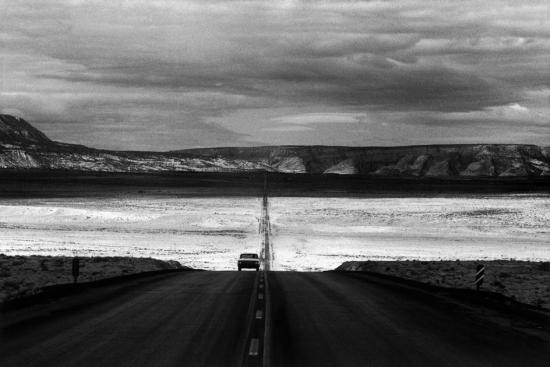
Kayenta, Arizona
Hiroshi Hamaya
1967
_______________________
The Order and Connection of Ideology Is the Same as the Order and Connection of Exploitation:
Or, Towards a Bestiary of the Capitalist Imagination
Jason Read
Abstract:
The turn to Spinoza by many Marxists combines the classic problem of Marxism,
that of base and superstructure, economy and ideology, with Spinoza’s challenging
assertion of the identity of order of connection of ideas and things. This paper looks
at two contemporary neo-Spinozists, Frédéric Lordon and Yves Citton, examining the
ways in which their works intertwine economy and ideology, desire and imagination.
The point, however, is not to just read Marx with Spinoza, but to use both together to
make sense of the imaginary and affective dimension of changes within the economy
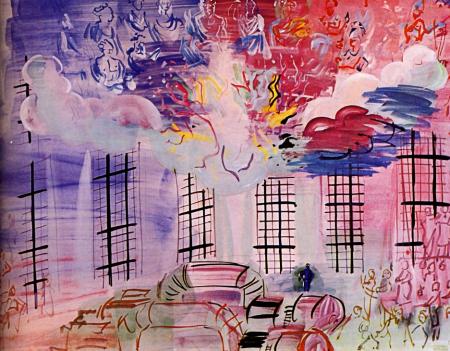
Electricity
1937
Raoul Dufy
b. June 3, 1877
_______________________
e-flux journal 56th Venice Biennale
Supercommunity, Corruption, Cosmos, Planetary Computing, Apocalypsis, Politics of Shine, The Art of Work, “Art”, The Social Commons, Cuba
Supercommunity (Editorial)Julieta Aranda & Brian Kuan Wood & Anton Vidokle Having no body and no name is a small price to pay for being wild, for being free to move across (some) countries, (some) political boundaries, (some) historical ideologies, and (some) economies. I am the supercommunity, and you are only starting to recognize me. I grew out of something that used to be humanity. Some have compared me to angry crowds in public squares; others compare me to wind and atmosphere, or to software. Some say they have seen me moving through jet-lagged artists and curators, or migrant laborers, or a lost cargo ship that left a trail of rubber ducks that will wash up on the shores of the planet over the next 200 years. I convert care to cruelty, and cruelty back to care. I convert political desires to economic flows and data, and then I convert them back again. I convert revolutions to revelations. I don't want security, I want to leave, and then disperse myself everywhere and all the time.
(....)
e-flux journal has been trying for years to give me a face and a name. The editors think they can see me move in the trees of the Giardini. They think they can find the supercommunity in how plants experience pain, how humans experience pain, how jellyfish talk to each other, how acacia trees warn other acacias. They think they can see me in how the world talks to the world.
The editors think they can trace my footsteps by asking artists and thinkers to consider how the supercommunity assembles through a growing series of themes that reflect the profoundly contradictory scales of thinking that are currently altering the collective consciousness of contemporary art, and by publishing these essays, statements, and prognoses in individual installments over the course of the Venice Biennale.
...(more)
_______________________

Trees at Estaque
Raoul Dufy
1908
_______________________
The Anthropocene and the memory of the Earth
Bronislaw Szerszynski
Abstract
Natural scientists sometimes us the word ‘memory’ to describe biological or even geophysical process: they talk of ‘climate memory’, or ‘ecological memory’, or materials as having ‘shape memory’. But what would happen if we took such usages seriously, and applied the idea of memory to a complex entity like a planet? How could the Earth be said to remember and to forget? What memory systems has the Earth evolved in its 4.5 billion-year ‘geostory’? And if the Earth is indeed entering ‘the Anthropocene’, a new geological epoch in which humans are the determining geological force (Crutzen and Stoermer 2000), how might the Anthropocene be inserting itself into the memory of the Earth? Is the Anthropocene to be thought of as just another layer, inserted into the ‘rock memory’ of the Earth? Or does it actually change the Earth’s powers of remembering and forgetting? And might thinking of the Earth as something that remembers and forgets change the way that we think about this thing we call the Anthropocene, what it is and what it means? _______________________
Words without Borders June 2015
Four Icelandic Poets
Fragments from the Guidebook of the Dead
Gyrðir Elíasson
Translated from Icelandic by Meg Matich
On the Sunny Side
There are planets that have
two suns and black
plants—
even though there are two suns
and the plants are the color of night
there are no wars
here, there is only one sun and the plants
are green,
but still, there is never peace
on a planet where there are two
suns, little white horses run
through forest plants
here, where there is only one sun,
and it is irreplaceable,
tanks cut across
all the forests
...(more)
_______________________

The Mediterranean
Raoul Dufy
1923
_______________________
Technologies of Voluntary Servitude (TovS):
a post--Foucauldian Perspective on Social Media
Alberto Romele, Camilla Emmenegger, Francesco Gallino, and Daniele Gorgone :
Abstract:
This paper aims to offer a new theoretical framework for thinking surveillance and submission in social media. Two attitudes have been dominant in this context until now. In the first wave of Internet studies, academicians used to consider virtual environments as “technologies of emancipation”. With the birth of the social web, scholars started to treat social media as “technologies of surveillance”. Surveillance and Panopticism found breeding ground in Internet and social media studies. Our hypothesis is that this perspective, although interesting and valuable, is today unsatisfactory, because it fails to give an account of what we consider as evidence: despite an increasing critical literature, and despite the fact that people are more and more aware of the surveillance exercised by social media, not much seems to be changing in prosumer’s (producers and consumers) practices. Our thesis is that this happens because individuals are not forced or cheated by the sociotechnical system, but rather they voluntarily submitted to it. In the first section, we are going to introduce La Boétie’s notion of “voluntary servitude”. According to a minimal definition, four aspects characterize voluntary servitude: (1) disadvantageousness – submission is a form of uncertainty because it depends upon power's arbitrariness; (2) abstainability – if the serfs choose submission, than freedom is just a matter of abstention; (3) (collective) subalternity – servitude presupposes a condition of submission to a form of power, a submission that singles out a collective dimension; (4) awareness – the submission cannot be reduced to a form of deceit of the power or to a miscalculation of the subjugated. In the second section, considering the paradigmatic case of Facebook, we are going to make the notion of voluntary servitude operative in the context of social media. _______________________

Window with coloured glasses
Raoul Dufy
1906
_______________________
Transcendental Clones & Generic-Humanity:
Ray Brassier, Nina Power, And Returning to The Question of The Human
The Tragic Community
This essay will attempt to build some conceptual links between Ray Brassier's essay 'Solar Catastrophe: Lyotard, Freud, and the Death-Drive' and Nina Power's 'What is Generic Humanity?' and asses one of the political consequences of this encounter. The hope here is that by demonstrating the conceptual solidarity between what may appear as two entirely different topics we gain a better understanding of the role of the Universal/Generic as it relates to Thought, for philosophy and politics.

Christian Coigny
via (OvO)
_______________________
The Quint: An Interdisciplinary Quarterly from the North
a special issue on (Post)modernism and Globalization.
This issue is designed for anyone with cabin fever, that claustrophobic uneasiness that accumulates over the long, dark winter months. Celebrating far away places, peoples, and diversity, this March quint contains articles by writers working in France, Palestine, India, North Carolina, Indiana, and California. We are also honored to present articles written by Canadian scholars: John George Hansen from the University of Saskatoon in Saskatchewan and John Butler from the University College of the North in Manitoba and to showcase Simon Samuel's story about the Caribou child from interviewer Clara Samuel. The subjects that this quint invites you to consider include the challenges of globalization, aboriginal indentity, the continuing influence of John Milton, the nature of power, the indoctrination of the young, the importance of same-sex bonding, women's revolutionary agency, the function of memory, the significance of space, Mulk Rah Anand's novels, and the art of Tim Burton. There is something here for everyone. For those interested in this issue's creative offerings, Lydia Criaig, from Chicago, has sent us a charming sight poem has proved to be a wonderful way to celebrate our lengthening light and rising temperatures. "Tick-Tock" always puts a smile on my face. Virginia Konchan, from Montreal, has honored us with a selection of beautifully-crafted, sophisticated verse that offers taut, thought provoking tropes while the snow melts. And always interested in light, shadow, and water Anne Jevene has submitted a number of spring photographs which she hopes her viewers will find entertaining.
As usual, this quint reminds us of the importance of good reading, interesting ideas, and thoughtful poetry in the North as the days begin to lengthen, and we all look forward to spending more time outside. Our next quint, forthcoming in June, will celebrate the arrival of the migrating flocks returning home and the summer solstice. Until then, we wish you once again the best of the Spring Melt and the happiness that always accompanies it.
Sue Matheson
Co-Editor
_______________________
the total city:
Will Self interviewed by Jo Mortimer.
(....)
Take Rannoch Moor. You think, come on, there’s nothing, it’s a wilderness, but it’s the result of neolithic slash-and-burn. Otherwise, it would be woodland — it should be woodland. The reason it’s covered in peat is because they chopped the trees down. It’s an anthropic landscape; all of the highlands of Scotland is an anthropic landscape. It looks that way because of stuff people have done to it; it doesn’t look that way naturally. And I think that’s embedded very deeply in the British psyche: the British know their country is completely anthropic. It means that the urban has psychic primacy. It doesn’t need to cover the physical land area. Everywhere you are in Britain, there is something immediately in your view to tell you about human activity, and by extension, the city. The city is omnipresent.
...(more)
_______________________

Pina Bausch
1940 - 2009
photo by Anna Wloch
.....................................................
Pina Bausch & Clairice Lispector
The poet's novel
Laynie Browne
(....)
... I hope to draw connections between the choreography of Pina Bausch and the poet’s novel. Can text move in the same visceral way as a bodily gesture? Does one stand up straight in a dance or a text depicting hollow uncertainty or emotional turbulence which follows trauma? What is a sexual text, a violent text, or one which erupts, breaking with expected notions of how one proceeds to represent an aspect of reality which exists primarily in the consciousness? The poet’s novel is the one that stands up and yells something inappropriate during a public lecture. It is also the novel that remains in its seat quietly, yet describes the impulse to scream at various moments, whether or not one does scream. The poet’s novel is the one which might spend three hundred pages contemplating whether one might scream. The inner life is not a series of events. There is no replacement for invisible gestures which occur all day, every day, akin to music, bodily breaking apart sensation, perception, and attempts to make sense of the myriad of non-sensical happenings which surround us.
Did Pina Bausch ever read the novels of Clarice Lispector? An affinity exists between these two artists—a physical interrogation of being which is a philosophy of movement. Writer Rachel Kushner writes on Lispector, in a recent issue of Bookforum:
“‘I’m the vestal priestess of a secret I’ve forgotten,’ the narrator of The Passion According to G.H. says. ‘I know about lots of things I’ve never seen,‘ Lispector says in her own ‘dedication’ for The Hour of the Star. In that same book, she writes that her task, in telling a story, is ‘to feel for the invisible in the mud itself.’ And ‘You can’t tell everything because the everything is a hollow nothing.’ The everything is the mud, the nothing that contains the something. Lispector’s subject, a grasping after the secret kept but forgotten, a kind of noumenal reality, ‘the invisible in the mud,’ is one that most writers don’t even touch on.” ...(more)
_______________________

Anna Wloch
_______________________
American Cynicism
And Its Cure
Jess Row
boston review
(....)
In a world not unlike the mid-to-late Roman empire—“a colossal bureaucratic apparatus whose inner and outer workings an individual could not fathom or influence”—contemporary citizens of the West have grown so used to satire, so pre-programmed to roll their eyes at the next item that crosses the news ticker, that they have all become, in Sloterdijk’s terms, not kynics in the lost tradition of Diogenes, but cynics. They have become self-satirists. No longer a commitment to a new way of life, cynicism is a lifestyle, what Sloterdijk calls “enlightened false consciousness”:
Psychologically, present-day cynics can be understood as borderline melancholies, who can keep their symptoms of depression under control and can remaine more or less able to work. Indeed, this is the essential point in modern cynicism: the ability of its bearers to work—in spite of anything that might happen, and especiall, after anything that might happen . . . . For cynics are not dumb, and every now and then they see the nothingness to which everything leads. Their psychic apparatus has become elastic enough to incorporate as a survival factor a permanent doubt about their own activities. They know what they are doing, but they do it because, in the short run, the force of circumstances and the instinct for self-preservation are speaking the same language, and they are telling them that it has to be so. . . . Cynicism . . . is that modernized, unhappy consciousness on which enlightenment has labored both successfully and in vain. Well-off and miserable at the same time, this consciousness no longer feels affected by any critique of ideology; its falseness is already reflexively buffered.
...(more)

Roadside
Yannik Willing-Holtz
_______________________
R. Scott Bakker: Global Elminativism and the Post-Intentional World
S.C. Hickman
(....)
For Scott what we neglect is more important than what we remember. We are selective creatures who forget more than we will ever be able to retain, and we base our knowledge on this minimalistic world of intentional folk-psychology rather than on the sciences which are continually blowing holes in our smoke screen semantic worlds. One might say we are tribal semanticists, we carefully protect and defend the bubbles of meaning that we are embedded in without knowing that they are all based on mechanisms of social control.
...(more)
_______________________
The Self Forgives Little of Itself
Adam Clay
guernica
The days swell with our remaining.
Yes, the leaves allow the wind to contain
the branch of a tree and the skyline
to become its own type of lineation,
the idea of beauty lost and then found along
the swirling liquid in the trashcans
left in the alley.
Watching the train cut across the prairie,
geese flying the wrong way
for the season,
it’s as if the knuckle of tomorrow
has arrived today
with the weight of snow and wind,
gardens cut open to sky
and the sky alive with the orange hue
of the sun replaced
by a false sense of itself,
a waste of time left clear
and open in this wash of sightline.
Adam Clay at the Academy of American Poets
_______________________

The Nightingale is Singing
Mikhail Vasilyevich Nesterov
b. May 31, 1862
_______________________
Three Poems
Adam Clay
la petite zine
[I do not deny repetition as the singular goal of emptiness]
I do not deny repetition as the singular goal of emptiness,
but repeating emptiness is something
worth dismantling.
I love the tangible aspect of my world,
but the concrete bores me.
Watching an ice cube melt from the inside bores me.
What doesn't bore me can be found in The Museum of Domestication.
I realize my words are only a footnote to the sea.
I realize the sea is only a song to myself.
...(more)
_______________________
Schizoanalysis as Anthro-Ecology
Edmund Berger
—synthetic zero
How does one begin to broach the question of linkage, passage, and reflexivity to be found in the theories and practices of anarchism, the radical post-psychoanalysis of Felix Guattari, and the ontological framework that has been ushered in the necessity of acknowledging the forces that we label “the Anthropocene”? The overlaps between each are undeniable: in was ecological concerns that late in his life Guattari turned his mind to; the field that his work is commonly situated – the school of post-structuralism – is often affiliated with anarchism of the so-called “post-left” variety. That Guattari was closely aligned with the Italian Autonomia, which the post-left anarchists owe much of their discourse to, is no passing coincidence. We can also note the presence of “green anarchism” under the post-left label, alongside the controversial, anti-civilizational stance espoused by anarcho-primitivism. Yet we can see clearly that this triad of eco-ontology, Guattari, and anarchism have yet to really have the dialogue that they deserve.
On even a surface level reading the commonalities between each point is immediately clear: none points to a resolving synthesis in thought or being. The Anthropocene has brought us full circle and pried open what was also present but shunted aside by the progress of the West – that civilization and nature are not separate, and that civilization and culture exist entangled in the complex web of the ecology itself, defined as it is by various states of emergence. Anarchism, regardless of which of the many monikers it adapts, is at its core a program that is constantly evading and contesting the centralizing and homogenizing forms of the state itself. Guattari, meanwhile, shifts these focuses to the levels of individuals and group’s subjecthood, looking to move from fixed and stable states to ones far from equilibrium. Keeping in tune with the manner in which each point in this triad presents itself as an ongoing unfolding, this essay will attempt no resolute synthesis. I am more concerned in this moment with simply tracing out a constellation of convergences and patterns, looking for possibilities of a minor politics for the Anthropocene.
...(more)
_______________________
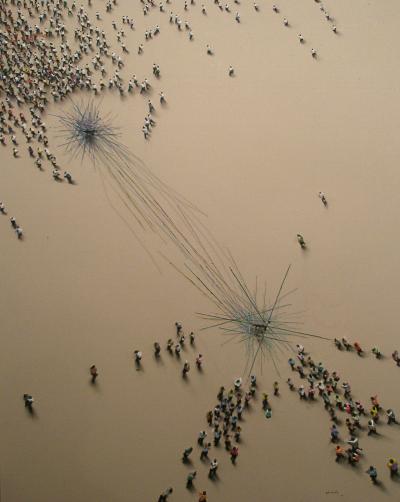
Distancias
2010
Juan Genovés
b. May 31, 1930
_______________________
Retrospectives 1: Thomas, Moore, and Craig
Peter Riley
fortnightly review
In most critical accounts of English poetry, the period called “the 1940s” has for a long time been considered a disaster. The conventional history is that all was going well enough with Auden, Spender, Day Lewis et al., and suddenly under the cover of war a race of demented poets were let loose who produced incomprehensible ravings which cannot be taken seriously for a moment. In fact the 1940s was not a disaster zone for poetry, it was a disaster zone for criticism, which was caused initially by moves in academia, especially Cambridge, to apply the established forensic expertise in locating literary frauds through the centuries to current production, thus assuming the right to intervene, with praise and blame as appropriate, in the production and reception of new poetry. This was the disaster it was bound to be, in which a bunch of Cambridge lecturers, led by F.R. Leavis, attempted to extend their coverage of the nineteenth and early twentieth centuries into the present tense, having already savaged Swinburne, Tennyson, Shelley, Hardy and others. The whole stress was and always had been on evaluation, discrimination, quality control, from a platform of moral responsibility through formal coherence (already Dylan Thomas must have sensed a tank regiment advancing towards him across the fens).
The intervention into contemporary poetry initially did a lot of good in fostering acceptance of Hopkins, Yeats, Eliot, and Pound (by Leavis himself in New Bearings in English Poetry, 1932) but it was hardly to be expected that critics who had already proved themselves incapable of reading Milton or Hardy would take kindly to what happened in the 1940s. ...
...(more)
|
